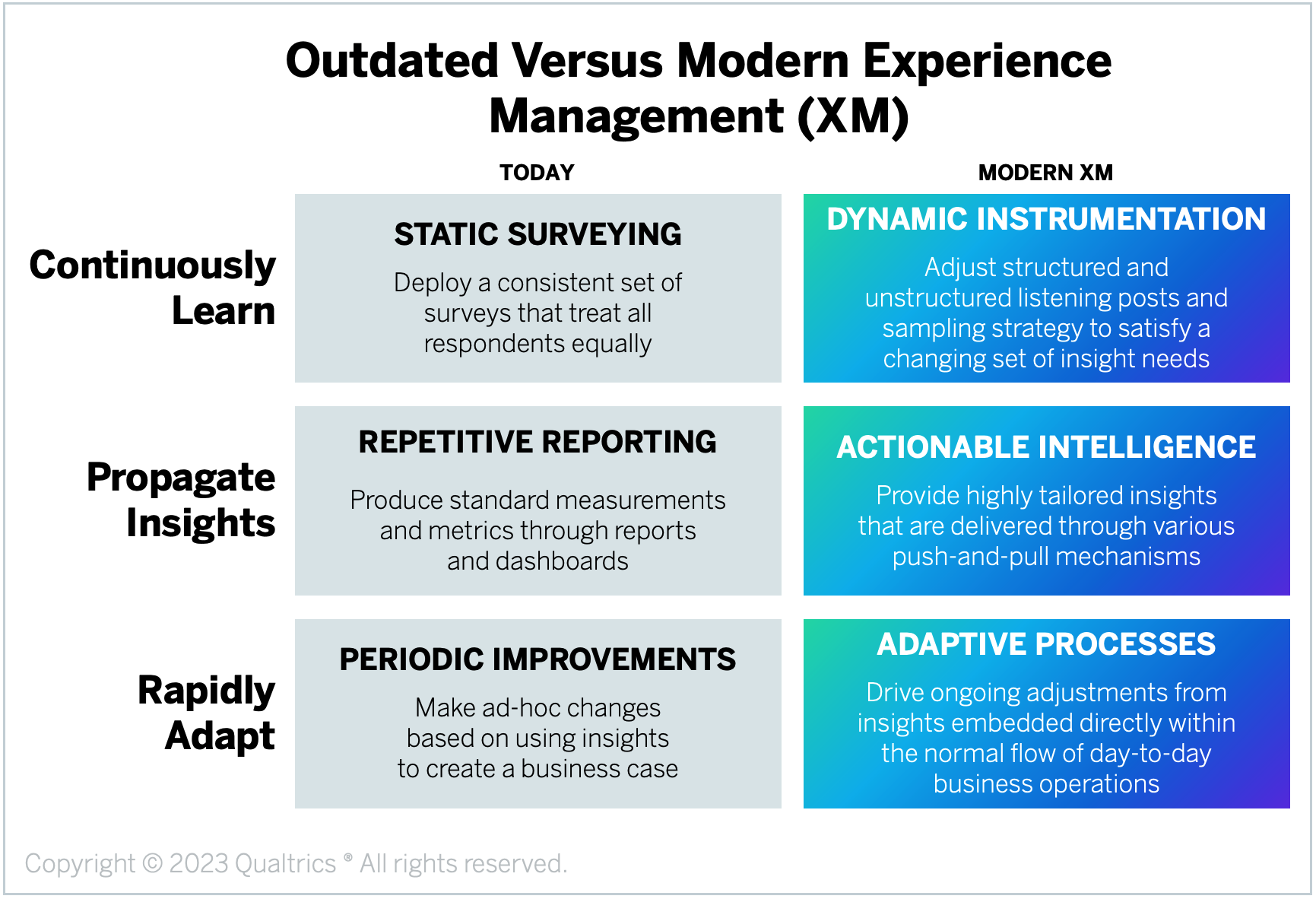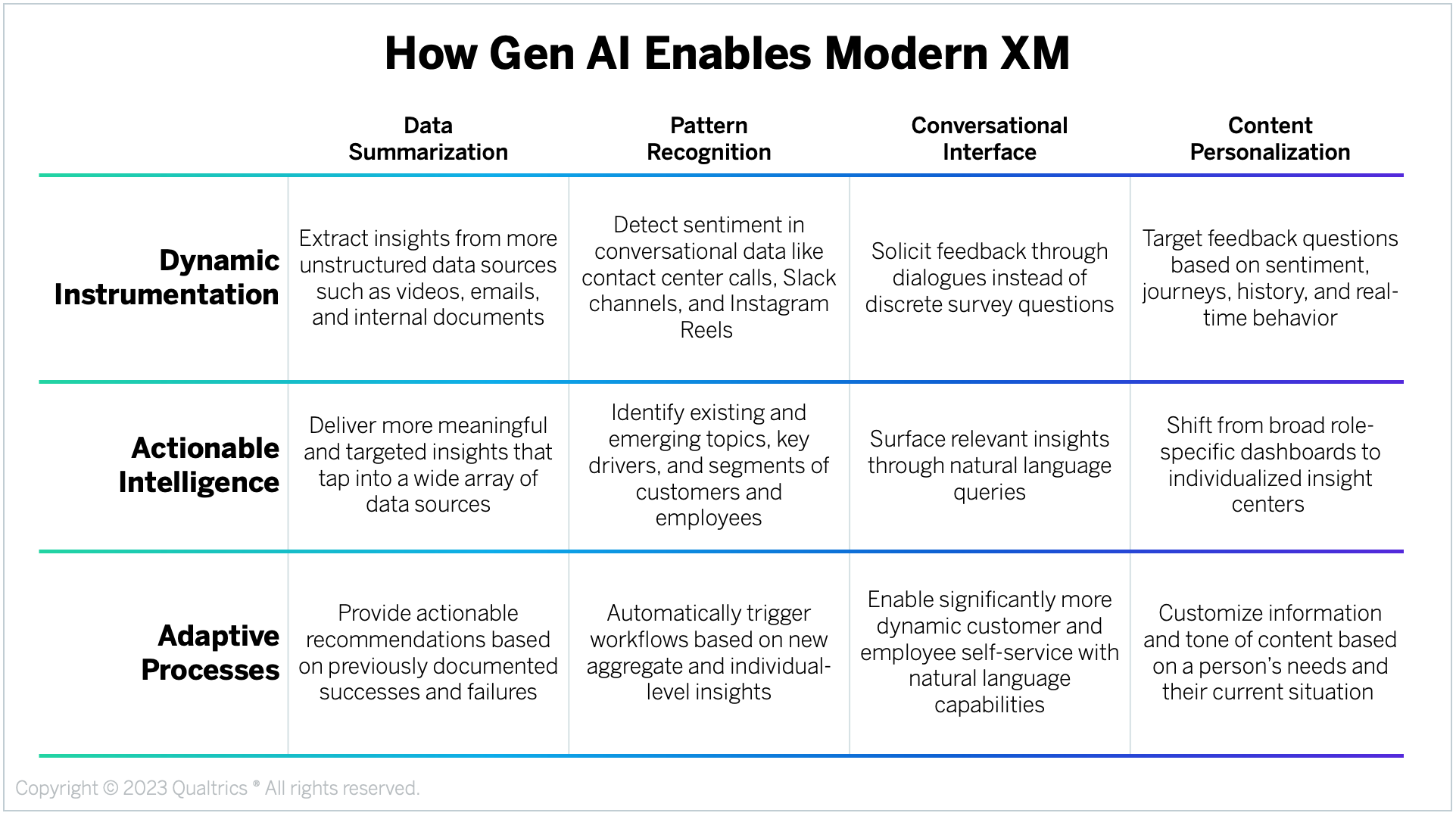Artificial intelligence (AI) has shifted from a domain for geeky discussions to a mainstream topic of interest. While AI has been around for decades, the introduction of Generative AI (“Gen AI”) models such as Open AI’s ChatGPT and Google’s BARD have not only dramatically enhanced the capabilities of AI, they’ve also accelerated public interest and experimentation in AI by providing near-universal access.
So what is Gen AI? Here’s what ChatGPT provided when asked to describe Gen AI to a smart audience:
“Gen AI” represents a cutting-edge subset of artificial intelligence (AI) that focuses on creating content or data that appears to be generated by humans, even though it’s produced by computer algorithms. These models, typically based on deep learning and neural networks, are trained on vast amounts of existing data to understand patterns, structures, and relationships. They can then autonomously generate new content, whether it’s in the form of text, images, music, or other data types. Gen AI’s significance lies in its ability to mimic human creativity and problem-solving, making it invaluable in various fields, including natural language processing, image generation, and data synthesis, but it also raises ethical and societal questions regarding the authenticity and responsible use of AI-generated content.”
The Overall Impact Of Gen AI
How will Gen AI affect Experience Management (XM) efforts? We’ve studied many disruptive technologies, such as the Internet and social computing, over the years, and like many of those important innovations, we believe that Gen AI will be:
- In the short-run: Less impactful than hyped. As with almost all new, highly-touted technologies, Gen AI will not achieve all of its potential in its early years. While there are many simple use cases that will create immediate value, the more impactful changes will take a while to materialize. What will cause the delay? Data training. Most of the initial uses of Gen AI rely on generic LLMs (Large Language Models), such as GPT and BERT, but the advanced functionality requires fine-tuning those models with an organization’s proprietary data, which is a process that takes significant time and expertise. In addition, organizations will need to redesign processes and business rules to assimilate the Gen AI capabilities.
- In the long-run: More transformational than envisioned. The potential for AI is so wide that it will eventually touch just about every activity in our lives. And given the large-scale experimentation enabled by the use of public Gen AI models, people will continuously identify valuable new use cases. This potential will draw in vast levels of investment to create a vendor ecosystem that will make it easier to deploy AI across an organization. We expect to see domain-specific LLMs, tools that accelerate the fine-tuning of corporate data, and deep integration of Gen AI into enterprise software applications. While Gen AI will become much easier to deploy, most organizations won’t build their own capabilities. Instead, they’ll rely on vendors that have integrated it into their offerings.
Addressing Some Common Concerns About AI
While we expect AI to drive widespread transformation, people are already concerned with some aspects of how the technology will be used. Since Gen AI does not “think,” but instead just predicts elements — such as words, sentences, and images — that best respond to prompts, it is neither inherently good nor bad for society. Overall, most of the issues represent short-term barriers that will dissipate over time. Here’s our take on a few of them:
- Ethics. Gen AI models are trained on open datasets, so they will have a tendency to reinforce existing biases and misbeliefs. For instance, if a company has a history of employing very few people from underrepresented groups, then an AI-driven recruiting system may screen out minority candidates. This is an issue that we believe will be addressed by organizations applying a values-driven approach to AI. Think of AI as impressionable toddlers who have no real filter on what they say; they try to mimic what they’ve heard. And just like parents who must instill their children with a sense of morals and values, organizations need to ensure that their AI systems operate in a way that reflects their values.
- Inaccuracies. Responses from Gen AI models may sound coherent, but that doesn’t mean that they are always correct. If a number of people are talking about how cats are eating cars, then Gen AI might suggest that there’s a new category of metal-consuming animals. And because it generates new content rather than just regurgitating existing data sources, Gen AI may take creative liberty and share false information, as it did when it cited fake case laws for a lawyer. While there will always be inaccurate interpretations of data, this issue will decrease dramatically in the long run as organizations train their AI models on their corporate and domain-specific datasets.
- Job elimination. Some people have concerns about the potential of AI eliminating jobs. These worries have existed for every advancement in technology, but they almost never result in reducing the overall workforce. While some of these new capabilities displace a small number of jobs in the short term, they almost always create many more new types of jobs that utilize the power of the technology and spur entire industries in the long run. Rather than using AI to lower the cost of maintaining the status quo, advancements from AI are more likely to be an economic platform of growth that improves people’s standard of living.
Four Gen AI Capabilities For XM
To help XM professionals build their Gen AI plans, we’ve examined how organizations are both currently using and planning to use its capabilities. While the technology has a vast number of capabilities, we believe that XM professionals should focus on these four disruptive attributes of AI:
- Data summarization. Gen AI can extract information from a wide variety of content, both structured and unstructured, and summarize insights from across those datasets. This is useful for direct access to this information and is also valuable for cleaning datasets for inclusion into other analyses. For instance, organizations can use Gen AI to summarize contact center interactions.
- Pattern recognition. Gen AI can spot patterns across large datasets, which enables it to identify information like emerging topics and sentiment. For instance, Gen AI can spot when a segment of customers seems to dislike a specific product feature or when a key subset of employees is particularly unhappy. These insights can provide input into much faster and more robust predictive analytical models.
- Conversational interface. Gen AI can understand human language prompts and craft human-sounding responses. It can also maintain context and make adjustments based on feedback. This enables wide-scale access to information because the interface does not require any prior training on the part of the user. Given this capability, Gen AI increases the adoption of digital channels as it can be used to deploy capabilities, like front-end chatbots, that simplify access to a company’s entire self-service portal.
- Content personalization. Gen AI not only repeats what it has learned from the existing content it has been trained on, it can create new content that extrapolates from those learnings. This includes adjusting its style and tone based on prompts. And it can communicate across different languages, enabling widespread translations. This also allows individuals to access highly tailored insights and organizations to deliver more customized content.
Gen AI Drives Modern XM
The capabilities of Gen AI will accelerate the evolution towards what XM Institute has labeled Modern XM.

Rather than thinking of Gen AI as a separate and distinct technology, XM Professionals should focus on how they can use it to enable:
- Dynamic Instrumentation. XM efforts will tap into Gen AI to gather insights from a vastly larger number of data sources, with an increasingly strong emphasis on unstructured, unsolicited channels such as chats, phone conversations, and Slack messages. And rather than relying on standard surveys, Modern XM efforts will adjust what organizations ask people based on an understanding of what they need to know to either better serve that individual person or to improve analytical models. All of these efforts will detect human sentiment and use it as a core input to their analytical models.
- Actionable Intelligence. XM efforts will tap into Gen AI to deliver more customized and interactive insights to people across an organization. Rather than relying on predefined reports and dashboards, Gen AI will provide access to insights that are tailored to facilitate a person’s specific decisions and actions. These insights will become increasingly prescriptive as organizations use Gen AI to analyze internal notes about success and failures in areas such as coaching employees and responding to customers.
- Adaptive Processes. As Gen AI dramatically increases the flow of actionable insights, XM efforts will trigger automatic workflows based on those insights. For instance, organizations may customize the information and tone in contact center scripts based on a customer’s current risk profile, they might assign training courses to managers based on insights from employees, they might send immediate refunds after a complaint from an important customer, and they might adjust supply chain orders based on new insights from an emerging customer segment.

Organizational AI Adoption Paths
Over the next three years, we expect to see organizations take on different AI usage personas. Here’s some advice for five common approaches that we’ve seen:
- Enthusiasts: Some organizations will jump on AI across the board, without a clear objective or purposeful deployment, and will look to apply AI everywhere they can.
- Our advice: Watch out that your organization doesn’t lose focus on its core business as these efforts can be quite distracting. Make sure you have a path to prune all of that effort down to a handful of viable opportunities.
- Testers: Some organizations will identify a small handful of areas to try to use AI and learn from these deployments.
- Our advice: Having a narrow focus on AI may cause an organization to miss out on some substantial opportunities. Ensure that you have a process for identifying potential new projects to add to your efforts or to replace other, less valuable AI initiatives.
- Automaters: Some organizations will utilize AI to become super-efficient, automating just about every process and interaction. They will live with the dehumanizing elements for the opportunity to become highly efficient.
- Our advice: Ensure that your efforts remain focused on achieving your organization’s mission and purpose. Given that you will run into limitations on the things you can do in the short run, you run the risk of alienating employees and disappointing customers.
- Humanizers: Some organizations will jump on AI with a mindset toward finding a balance between automation and some other XM-centric values. They will train their people on skills for using AI as well as skills for using it appropriately with customers and employees.
- Our advice: This can be a great approach as long as you don’t expect too much change from those efforts short term. It may be best to pick a few vendors to experiment with rather than to deploy raw Gen AI capabilities.
- Hesitaters: Some organizations won’t put a lot of energy into AI until they see more mainstream adoption and use cases emerge.
- Our advice: This is a dangerous approach as the organization may fall behind in its understanding of how AI can impact its operations. While it may take a year or so for the technology to enable a lot of transformational work, it’s critical that leaders have a vision for how they plan to deploy it.
Closing Pieces of Gen AI Advice
No matter which path your organization takes, we recommend that you do these things:
- Build your AI “Competencies.” While we’ve discussed a lot about technology in this post, keep in mind that successful transformation efforts will require a focus on all three elements of the XM Operating Framework: Technology, Competency, and Culture. In particular, make sure you think through how to incorporate AI across all six Competencies: Lead, Realize, Activate, Enlighten, Respond, and Disrupt. For instance, while Gen AI will provide a flow of useful insights, organizations will need to build the Respond Competency to identify the processes for taking immediate action on what they learn and for integrating those insights into other process flows.
- Make an AI disruption plan. Given the transformational power of AI, it will likely have a major impact on how most industries and companies operate. Start building a point of view about how it will impact your organization and its competitive environment. Here’s a good exercise: Run an internal cross-functional session where you explore the potential opportunities to utilize each of the four Gen AI capabilities listed above.
- Establish an AI CoE. Since we expect Gen AI to become a significant capability enabler within organizations, it’s critical that you establish a Center of Excellence (CoE) to guide the change. Work with your IT department to start developing a CoE that includes both the technical and non-technical aspects of AI.
- Build an AI data plan. When you start actively deploying Gen AI, you will find that internal data sources, especially unstructured ones, become incredibly valuable. That’s because the technology can be trained to analyze content such as notes from customer meetings, win-loss reports, post-project debriefs, product guides, or call center conversations. To ensure you’re prepared to take full advantage of Gen AI when the technology is ready at your organization, start developing a plan now to identify and collect this data.
- Start using Gen AI. Until you use Gen AI on your own, it will continue to seem like an abstract concept. Make sure to use public models, such as ChatGPT and BARD, to support some of your personal and/or professional efforts so that you gain a strong appreciation for using prompts to tailor the data.
The bottom line: Plan for AI to disrupt your XM efforts…in the long run.
Bruce Temkin, XMP, CCXP, is the Head of Qualtrics XM Institute
Isabelle Zdatny, XMP, CCXP, is an XM Catalyst with Qualtrics XM Institute





